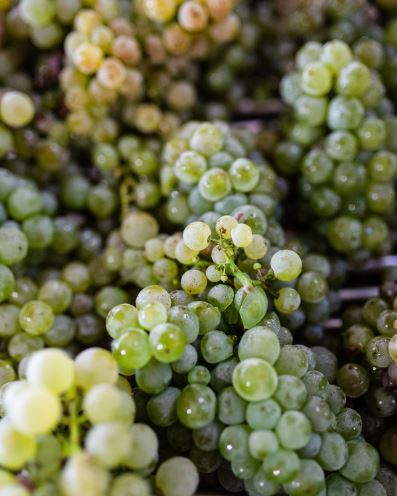Although the Crémant appellation is one of the most recent in the Bordeaux region (1990), the production of sparkling wines in Bordeaux is a century-old tradition. With its delicate bubbles and full of freshness, Crémant de Bordeaux, is the perfect accompaniment for festive occasions.
Crémant de Bordeaux is produced using the same traditional method as they use in Champagne, but due to the choice of grape varieties, it is often more aromatic with flavours of citrus and stone fruits. The grapes have to be hand-harvested, and then the whole grape bunches are gently pressed to release only the most delicate juice. Once the first fermentation to produce the alcohol is complete, the wine can then be bottled with a dose of “liqueur de tirage”. This is a mixture containing yeast, wine and grape sugar which kick starts the second fermentation. The sealed bottle captures the carbon dioxide released from the fermentation and creates the signature bubbles of a sparkling wine.

The sparkling wine must then spend at least 9 months in the bottle in contact with the dead yeasts or ‘lees’. Most producers of Crémant de Bordeaux extend this time in order to produce yeasty characters such as bread dough and brioche. Once the ageing is complete, the sparkling wine can be disgorged. This means that the dead yeasts are collected in the neck of the bottle, frozen and then the cap can be released. The pressure shoots out the frozen parcel of yeast and the wine can be topped up with “liqueur d’expedition” and sealed. The “liqueur d’expedition” is a mixture of wine and grape sugar which determines the final sweetness level in the Crémant de Bordeaux varying from Brut (dry) or Sec (a little sweeter) to Demi Sec or Doux (sweet). The traditional method is a long and complicated process but the resulting wines can be incredibly complex and elegant.
Unlike most ‘traditional method’ sparkling wines that are produced from Chardonnay and Pinot Noir, Crémant de Bordeaux is made only from grape varieties that are used in Bordeaux still wine production. The most important white varieties are Sauvignon Blanc, Sémillon, Muscadelle and Sauvignon Gris. The common red varieties are Merlot, Cabernet Sauvignon and Cabernet Franc.

It can be difficult to pinpoint the taste of Crémant de Bordeaux as it is very grape and age dependent. Typically, when higher proportions of Sémillon are used the wines are nutty and elegant. Sauvignon Blanc brings more floral and grass-like aromatics whereas Merlot adds more raspberry and redcurrant notes. White Crémant de Bordeaux can be made using red varieties as long as no skin contact occurs, whereas rosé Crémant de Bordeaux must have a proportion of red grapes to give the delicate pink colour.

The longer the wine spends in contact with the lees the more pronounced the flavours of pastry, brioche and bread dough will be. These flavours are often used to describe more complex and age-worthy wines as the structure must be good enough to support these flavours.
White and Rosé Crémants would be the perfect way to start the celebrations! They are best enjoyed with aperitifs, shellfish and red fruit desserts. However, for white meat dishes, the white Crémant is preferable and for cheeses, the Rosé is more suitable.

Bordeaux Crémants are a popular glass to serve for the festive season as their easy-drinking nature and touch of soft fruitiness suit many palates.
The post Crémant de Bordeaux for the festive season appeared first on Site Officiel Bordeaux.com.




















